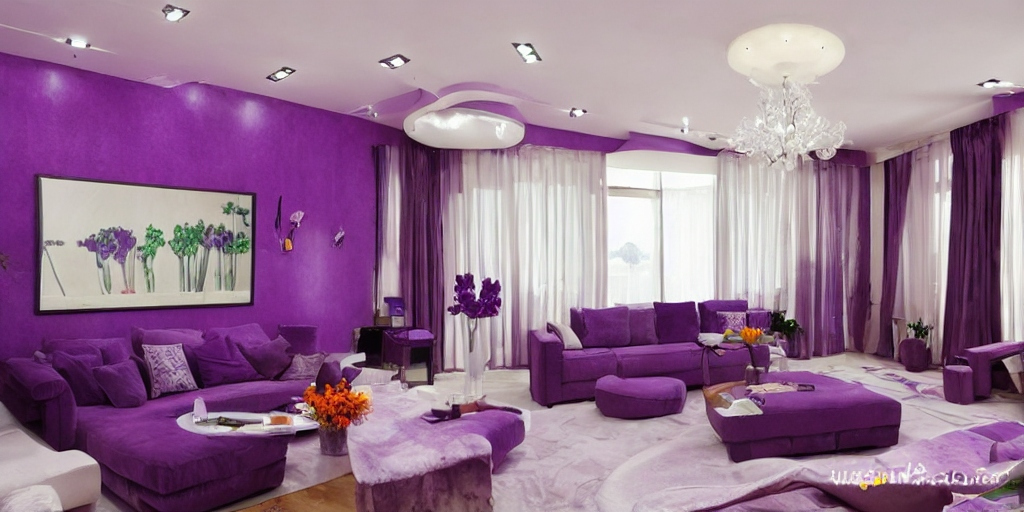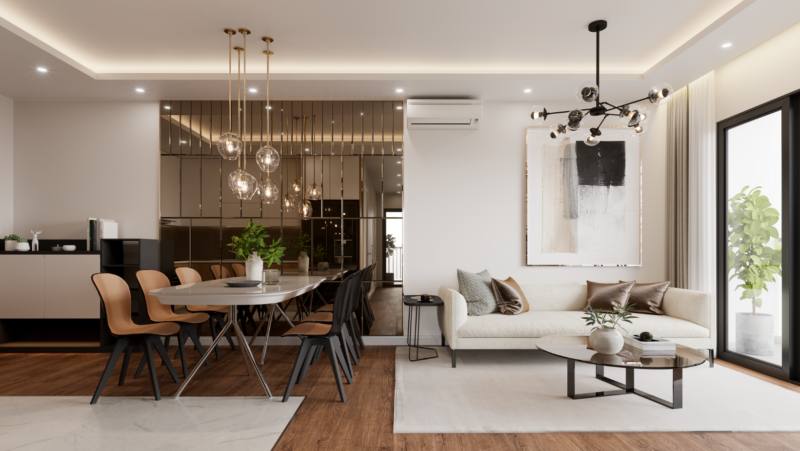Space planning, a fundamental element in the field of interior design, is more than just arranging furniture. It’s the strategic allocation and configuration of space, with the goal of enhancing efficiency and comfort. This process doesn’t just apply to large office buildings or luxury homes, but also to every space people inhabit, from cozy apartments to bustling cafes.
Understanding the principles of space planning can transform the way you perceive and utilize your living or working environment. It’s not just about aesthetics, but also about creating a space that aligns with your lifestyle or work style. So, let’s delve into the fascinating world of space planning, where form and function harmoniously coexist.
Understanding the Concept of Space Planning
Space planning goes beyond mere furniture arrangement—it’s an essential part of interior design that leverages space to enhance both efficiency and comfort. It utilizes floor plans and room layouts, considering elements like functionalities, room size, and existing architectural features.
Let’s look at the concept from three main perspectives—function, flow, and flexibility.
- Function: Space planning involves assessing the purpose of each area. For example, areas for relaxation—like a living room—require different spatial considerations than an office or a kitchen.
- Flow: Space planning aims for smooth movement between related areas, such as connecting a dining room directly to the kitchen. It considers whether the flow of people can happen without obstructions, thereby aiding ease of use.
- Flexibility: A good space plan offers options for multiple uses of a room, indicating versatility in its design. An example is providing enough space for a home office that can quickly transform into a guest room.
Space planning also deals with choosing and arranging furniture and accessories. These choices aim to meet the space’s overall aesthetic and functional requirements. For instance, in an office setting, ergonomic chairs and desks offer improved comfort for employees, contributing to productivity.

Furthermore, space planning takes into account lighting and ventilation, ensuring that a room is not only visually appealing but comfortable and healthy. For instance, a sunroom benefits from natural light and airflow, adding to the room’s overall ambience.
One must remember, though, that while a well-devised space plan optimizes functionality and comfort, it’s crucial to adjust the scheme to meet the occupant’s lifestyle or work style. A space might be well-planned, but if it doesn’t serve the individual’s preferences and habits, the efficacy of the space plan diminishes.
In this light, understanding the concept of space planning is pivotal to creating enjoyable, productive environments from homes to cafes. With such awareness, individuals can change their living or working spaces to fully align with their styles, leading to a higher quality of life or work life.
Key Aspects of Space Planning
Based on the previously explored components of space planning, several key aspects arise that fundamentally influence successful interior design transitions.
Firstly, balance in design forms an essential aspect. It’s a scenario where visual weight across the room gets distributed evenly, enhancing the overall appeal. Balance becomes achievable through symmetrical, asymmetrical and radial designs.
Secondly, a profound consideration in space planning involves adhering to the principles of scale and proportion. Scale refers to how items within the space relate to each other in size. Proportion, on the other hand, involves the balance between design elements such as shape, color, and texture.
Thirdly, focus points offer another crucial perspective in the sphere of space planning. A focal point attracts attention instantly upon entering. It could be a significant furniture piece, a work of art, or even a uniquely textured wall.
Additionally, rhythm enters as a fundamental aspect of space planning. It provides a sense of movement, leading an eye from one design element to another in an effortless, structured manner. It manifests through repetition, progression, transition, or contrast.
Lastly, color plays a vital part in space planning too. It contributes to the psychological comfort of the area, with different colors often invoking varying emotional responses. Therefore, effective color selection and combination become crucial.

Throughout these considerations, the pre-eminent functional requirements remain paramount. The utility of the space dictates the design approach and serves as a guideline in selecting and arranging elements. Similarly, ease of movement factors in, ensuring smooth transitions from one area to another. In terms of flexibility, incorporating versatile designs that accommodate various activities creates a truly functionally efficient space.
Harmonizing all these factors ultimately houses the essence of effective space planning. Within this complex orchestration, each aspect serves a unique function. Together, they build towards the broader goal – creating spaces that are not only aesthetically pleasing but also functionally practical and adaptable to suit various lifestyles and work patterns.
The Role of Space Planning in Interior Design
Space planning plays a significant, multi-faceted role in interior design. It determines how a space functions, influences the flow of movement, and dictates the placement and sizing of furniture. A well-executed space plan can create a harmonious balance between aesthetics and functionality.
Room size, function, and flexibility lie at the heart of space planning. For instance, a bedroom’s design involves considering the bed placement, the yield of storage, and considering dressing areas, all while keeping aesthetics in mind. There’s also the added complexity of ensuring the bedroom meets the occupant’s flexibility requirements – think pull-out beds for tiny spaces or built-in work areas for bedroom-office hybrids.
In a commercial setting, space planning focuses on optimizing productivity and efficiency. It includes accounting for shared workspaces, collaborative areas, individual workstations, and storage provisions. For instance, an open office layout might allocate more space for communal work and meeting areas while maintaining private office spaces for managers or supervisors. Metrics as such show the versatility of space planning in interior design.
Space planning also impacts the natural and artificial lighting of a space, affecting a room’s ambiance and mood. As an example, a well-positioned window can maximize daylight and can designate focus points in a room. On the contrary, improper space planning can lead to spaces that are either too dark or too brightly lit, causing discomfort.
Lastly, space planning caters to ventilation requirements, essential to a building’s overall comfort level and air quality. Good space planning ensures efficient air movement, reducing the reliance on energy-consuming air-conditioning.
Overall, space planning’s role is integral in interior design. Cutting-edge space plans shape the room’s design, contribute to its flexibility, cater to lighting and ventilation needs, and can even influence productivity and mood. These factors show how space planning subtly yet powerfully molds our surroundings.
Approaches to Effective Space Planning
Maximizing aesthetics, functionality, and comfort within a space involves several sound strategies. Notably, these strategies are often tailored to specific needs and contexts, focusing on factors such as flexibility, lighting, ventilation, and furniture arrangement.
Consider Functionality First
Prioritize functionality when planning a space. This involves assessing effective usage for the area, based on activity patterns, storage needs, or workflow requirements. For instance, in a corporate office, common areas like meeting rooms and break zones mandate easy access and flow, signifying the importance of functionality in space planning.
Balanced Use of Space
Ensure a balanced use of space to enhance both aesthetics and practicality. Quite often, excess furniture or décor leads to a cluttered appearance, overwhelming the users. On the other hand, sparse interiors may seem uninviting. Balancing these elements, like in a living room with adequately-sized couches, a coffee table, and tasteful accessories, cultivates a harmonious atmosphere.
Focus on Lighting and Ventilation
Give equal attention to the aspects of lighting and ventilation. Proper natural light provision fosters a vibrant ambiance and reduces dependence on artificial light. Moreover, strategic placement of windows and air vents promotes efficient air circulation, improving comfort and energy efficiency. For instance, architects often design buildings with large, vertical windows to maximize sunlight exposure and facilitate ventilation.
Adaptability and Change
Keep the space adaptable for future changes. An effective design accommodates growth, allowing tweaks to the layout as necessary. This flexibility proves critical in spaces like offices or households, which undergo frequent changes in their dynamics and functions.
In essence, adept space planning involves various components, each contributing critically to the overall aesthetics, functionality, and comfort. Understanding these variables, aligning them to specific contexts, and employing them strategically can lead to enhanced productivity and improved mood within varied settings. Remember, space planning isn’t just an art; it’s an intricate science, mandating expertise, creativity, and vision.
Practical Tips to Master Space Planning
- Assess Functionality: First, one must identify the purpose of the space. Is it for work purposes, socializing or relaxation? The furniture choices, layout and even the color scheme hinge on the room’s functions. An office room, for instance, requires a desk and proper storage facilities for documents. Understand the activities that the space caters for optimal functionality.
- Prioritize Traffic Flow: To ensure seamless movement, the designer must prioritize the traffic flow. This refers to the path people follow while moving around the particular space. Avoid blocking these routes with furniture or other decorative elements.
- Balance Space Usage: Designers divide the space into two categories: Positive and Negative. Positive spaces contain objects such as furniture and decor, while negative spaces are the open areas around these objects. Striking a balance between these two areas generates a comforting sense of harmony in the room.
- Incorporate Appropriate Lighting: The type and source of light can significantly influence the mood, aesthetics and functionality of a room. Natural lighting brings positivity and energy into a room, while artificial light sets the tone and mood according to the use of the space.
- Plan for Future Changes: Good space planning takes into account the potential for alterations in the future. The evolution of technologies, changes in lifestyle or work habits, and raising kids or having pets could all influence the space’s needs in times to come.
- Lean Into Ventilation: A well-ventilated room is pivotal to maintaining a healthy and comfortable environment. It helps circulate fresh air, preventing suffocating scenarios especially in cramped areas.
Following these tips can make a significant difference in the outcomes of space planning. By keeping these factors in mind, designers can create a more functional, efficient, and comfortable space for individuals to live, work, and socialize. A well-planned space is not just aesthetically pleasing but also contributes to productivity and mood enhancement, reaffirming the earlier discussion on the importance of effective space planning.
Space Planning: Misconceptions and Limitations
In exploring the realm of space planning, various misconceptions cloud the true essence of this crucial process. One common misconception barricades the understanding that space planning merely relates to furniture arrangement. Rather than this reductionist view, it intricately correlates with room design, movement flow, and functionality, intricately weaving various elements together to create balanced and efficient spaces.
Another distortion underscores that expensive furniture equates to effective space planning. However, quality does not upstage the essence of well-considered placement and usage of space. This concept aligns with the notion that bigger equates to better. Larger spaces don’t automatically denote functionality or efficiency. It’s about using the given space effectively, prioritizing traffic flow and ensuring a balance in space usage.
Setting the misconceptions aside, limitations also appear on the space planning horizon. Foremost amongst these is the pressure of accommodating future changes. Whilst planning for adaptability is paramount, it poses a trade-off between current requirements and potential future alterations.
Next in line is the challenge of achieving the perfect lighting balance. Achieving optimal lighting proves to be a struggle, with the placement of windows or interior lighting being a determinant in finalizing the layout.
Lastly, ensuring appropriate ventilation poses another restriction. An interior design project can contain various installations, furniture, and other elements that may hinder proper ventilation, thereby diminishing the living comfort in the space.
These misconceptions and limitations emphasize the essentialness of expertise, creativity, and vision in space planning. It underlines the intricate balance between functionality, efficiency, comfort, and the ability to anticipate and pan for future changes. Each of these cogitate the constant evolution of spaces, reminding us once again that space planning goes beyond mere furniture arrangement. The ultimate goal remains to create harmonious, spacious environments that enhance productivity, mood, and overall aesthetic appeal.
Space planning’s pivotal role in interior design can’t be overstated. It’s not just about furniture placement; it’s a holistic approach that enhances functionality, flow, and flexibility. It’s also a visionary process, anticipating future changes and adapting to them. It’s about striking a balance between aesthetics and practicality, ensuring optimal lighting and ventilation. It’s a testament to the power of expertise and creativity in transforming spaces into efficient, harmonious environments that boost productivity and mood. So, whether you’re designing a home or an office, remember that space planning is the key to creating spaces that evolve and adapt, not just exist. It’s the secret to a well-designed space that truly works for you.





